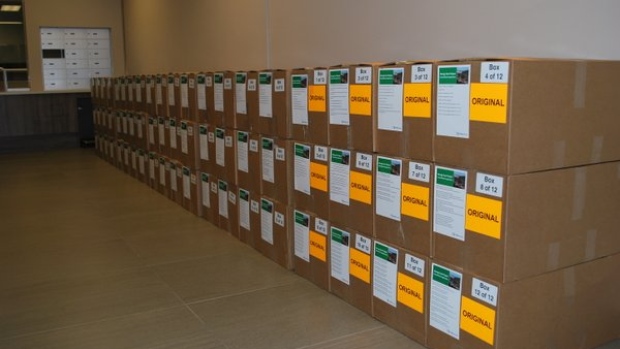May 17, 2016
Almost 39,000 pages for a pipeline proposal: Energy East, By The Numbers

Canada’s National Energy Board formally acknowledged receipt of TransCanada’s “consolidated” application for its Energy East pipeline proposal on Tuesday. Clocking in at nearly 39,000 pages in 12 boxes, the sheer size of the filing is massive and it got us thinking about some other surprising numbers associated with the controversial plan.
38,885: pages for one complete “consolidated” copy of the project’s regulatory application
1,000+: intervenors expected to participate in regulatory hearings
1,600: kilometres of new pipeline that would be involved in completing the project
3,000: kilometres of preexisting natural gas pipeline that would reconfigured to oil service
1,067: diameter of the proposed pipeline, in millimetres
1,100,000: barrels of crude oil the project would ship from Alberta to New Brunswick every day
32,000,000: tonnes of greenhouse gases generated by producing enough extra oil to fill the project (source: Pembina Institute)
4,700,000,000: dollars the projected cost of the project has increased since it was proposed in 2013 ($11B v $15.7B)
2,300: direct and indirect jobs the project is expected to create in New Brunswick
13,282: signatories to a petition asking the Parliament of Canada to block the project (almost all of which are from Quebec)
900: beluga whales in the St. Lawrence River that forced TransCanada to cancel plans for a Cacouna export terminal
500: communities through which the pipeline would pass if constructed
27: expected months it will take to complete the regulatory review
82: Montreal-area mayors who rejected the project in January before the application was even filed
7: conditions Ontario and Quebec jointly said the project must meet to win approval





